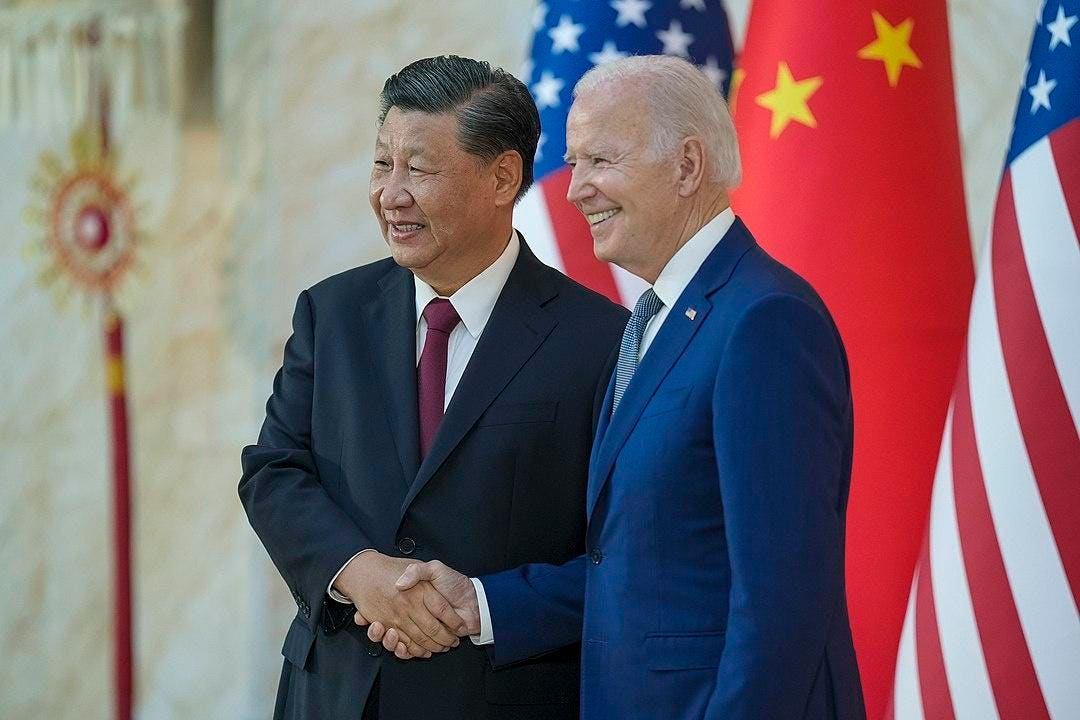The Chairman and CEO of RTX, the world’s biggest aerospace company, used the occasion of this year’s Paris Air Show to deliver an important message to Washington.
Greg Hayes told the Financial Times that it isn’t feasible for U.S. manufacturers to fully decouple from China, but they can take steps to reduce potential vulnerabilities.
Citing his own company’s relationship with “several thousand” Chinese suppliers, CEO Hayes said “we are not in a position to pull out of China the way we did out of Russia.” Raytheon contributes to my think tank.
The Hayes view may not have been well received among some hardline critics of China, but it has the twin virtues of being honest and accurate. Any effort to fully exit China would be horrendously expensive and time consuming, reducing the competitiveness of US products.
What US policymakers and producers need to do is find a middle ground between pulling out and stoking China’s superpower pretensions. In the past, Washington has been too willing to overlook China’s transgressions. Now it needs to avoid over-reacting in the opposite direction.
The Biden administration understands this, but some big companies such as Microsoft
MSFT
In February of 2021, only weeks after his inauguration, President Biden issued an executive order directing assessment of US supply-chain dependencies. The order singled out four areas for special attention: pharmaceuticals, semiconductors, critical minerals, and high-capacity batteries.
As noted in the order, the resulting studies were a continuation of work begun in the Trump administration, which in its final industrial-capabilities report to Congress decried the “steady deindustrialization” of the US economy.
That trend had been largely ignored by the Bush and Obama administrations. By the time Biden took office China’s manufacturing capacity had matched that of the US, Japan and European Union combined. Moreover, Beijing made little effort to conceal its goal of becoming the world’s leading source of advanced technology.
Biden and company did not wait until the year allotted for the sector studies had elapsed. By June of 2021, they had an agenda to remedy the most pressing vulnerabilities. These included:
- A multifaceted plan to revitalize domestic production of vital drugs, including off-patent generics where China had assumed a dominant role in supplying essential precursor chemicals.
- A program of subsidies and tax credits aimed at rebuilding the US semiconductor manufacturing base, which had declined to 12% of global capacity despite America generating 34% of demand.
- A multiagency initiative to identify opportunities for the domestic mining and processing of minerals such as rare earths critical to defense production and implementation of clean-energy plans.
- A ten-year plan for building a resilient supply chain in support of lithium batteries and other technologies suited for compact, high-capacity storage of electricity.
This was just the beginning. The administration followed through with a series of legislative measures such as the Chips Act that have produced a surge in construction of domestic facilities for manufacturing cutting-edge microelectronics and energy storage devices—much if it funded by foreign companies.
China wasn’t the only reason for these efforts, but the administration’s environmental and workforce goals in many cases dovetailed nicely with its desire to counter China’s technological aspirations.
The first faint hints of a national industrial policy that emerged during the Trump administration have now coalesced into a comprehensive agenda for economic renewal. Some facets of administration activity, such as antitrust enforcement, haven’t quite caught up with where the White House wants to go, but the overall direction of policy is clear.
That, however, brings us to the issue of companies that don’t seem to have gotten the message. Some of the nation’s biggest and most progressive enterprises still are too heavily exposed to China for their own good, and the good of the nation.
Take Apple
AAPL
And then there is Apple’s decision to source its new virtual-reality headset exclusively to Chinese manufacturer Luxshare—apparently the first time this has ever happened at the launch of a new Apple product. Talk about bad timing.
To take another example, Microsoft continues to employ thousands of software engineers at its Chinese research locations, many of whom are working on cutting-edge technologies such as artificial intelligence.
Geoffrey Cain of the Foundation for American Innovation complained in June 13 congressional testimony that Microsoft’s Beijing research center “is the laboratory that went on for two decades to train many of the top AI technologists and developers in China.”
While Microsoft rival Google
GOOG
These companies and others need to get in step with where Washington is headed. President Biden is, if anything, more forgiving of China’s many transgressions against global norms than the next Republican president is likely to be.
So, while Greg Hayes is right about finding a middle ground between decoupling and letting US deindustrialization continue, some of his tech-industry brethren need to wise up to a rapidly changing great-power dynamic.
RTX and Google contribute to my think tank.
Read the full article here





